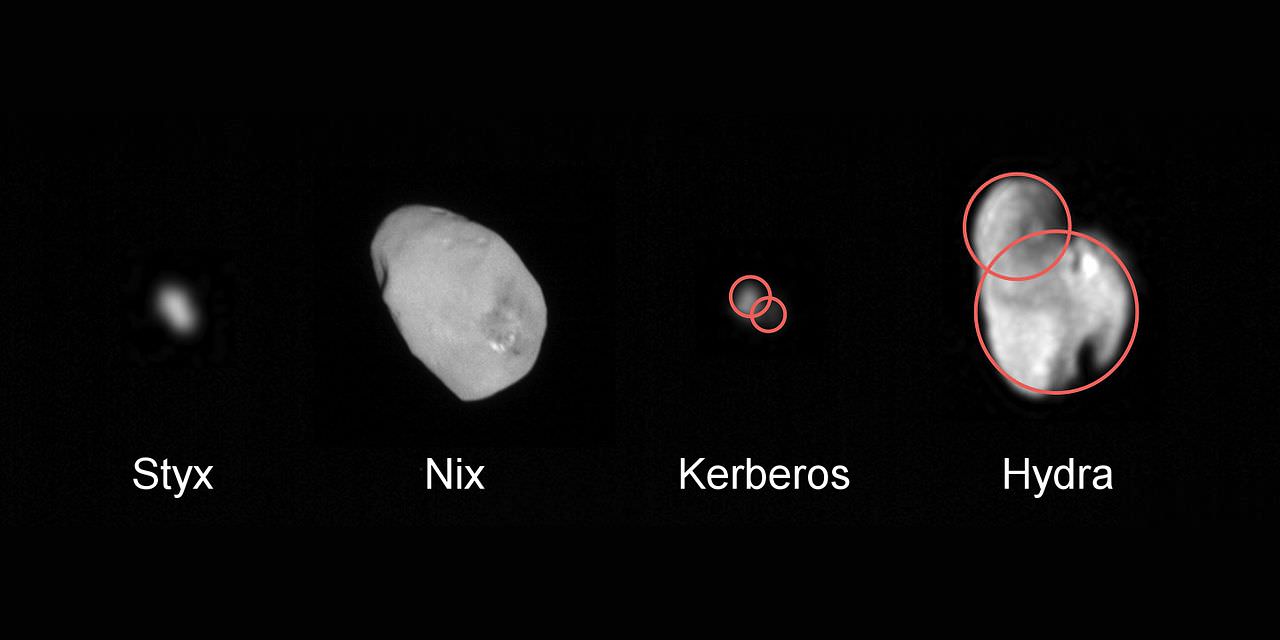The high albedo (reflectivity) of some of Pluto’s moons supports the theory that those moons were formed as a result of a collision, rather than being Kuiper Belt Objects (KBOs) that wandered too close and were captured by Pluto’s gravity. Data supporting the collision theory came from NASA’s New Horizons spacecraft as it flew by Pluto in July 2015.
The Pluto system is a complex one. Pluto has 5 moons: Charon, Styx, Nix, Kerberos, and Hydra. Charon is the only moon that is tidally locked with Pluto, and the two are sometimes called a double dwarf planet. The system’s barycenter lies between Pluto and Charon, though much closer to Pluto. The objects in the system move in near-circular orbits, rather than ellipses.
Pluto and Charon were thought to have formed the same way the other planets formed in the Solar System; by coalescing out of a ring of debris left over after the Sun formed. Then, it was thought, the other Plutonian moons were captured from the Kuiper Belt. Pluto resides in the Kuiper Belt, so this made sense. Some of the other moons in our Solar System, like Neptune’s Triton and Saturn’s Phoebe, are also thought to be captured Kuiper Belt Objects (KBOs).
A competing theory for the formation of the Pluto system is the collision theory. This theory states that Pluto and Charon did indeed coalesce out of the ring of debris around the Sun, and that Charon was itself a dwarf planet. But a collision occurred after that, about 4 or 4.5 billion years ago, between Pluto and an object about the same size as Pluto.
This collision left Pluto and Charon in their binary state, but created a circumbinary disk of debris out of which the other 4 moons formed. There are competing versions of these theories, one of which suggests that all of Pluto’s 5 moons were formed by this collision, and none coalesced out of the circumstellar disk of debris that the other planets were formed from.
New Horizons has delivered measurements and data showing that the albedo of Pluto’s 4 smallest moons is much too high for captured KBOs. Their surface reflectivity is highly suggestive of a water-ice composition. Measured KBOs have a geometric albedo of less than .20, while Styx, Nix, Hydra, and Kerberos have values of .40, .57, .56, and .45 respectively. This points to the idea that the object that collided with Pluto 4 to 4.5 billion years ago had at least some icy surface layers.
Pluto’s 4 small moons, Styx, Nix, Kerberos, and Hydra, are all non-spheroidal. This also points to their origins as conglomerated objects which formed from a collision-induced debris disk, rather than as captured Kuiper Belt objects.
These results were published in the journal Science, on March 18th, 2016. They were gathered using the Long-Range Reconnaissance Imager (LORRI), and the Multispectral Visible Imaging Camera (MVIC) instruments on board New Horizons.
Half of the data from New Horizons’ visit to Pluto is yet to arrive, including data from the Linear Etalon Imaging Spectral Array (LEISA). Scientists are hopeful that this data, and all the existing data which together will take years to analyze, will answer some of the questions surrounding the formation of the Pluto system.

